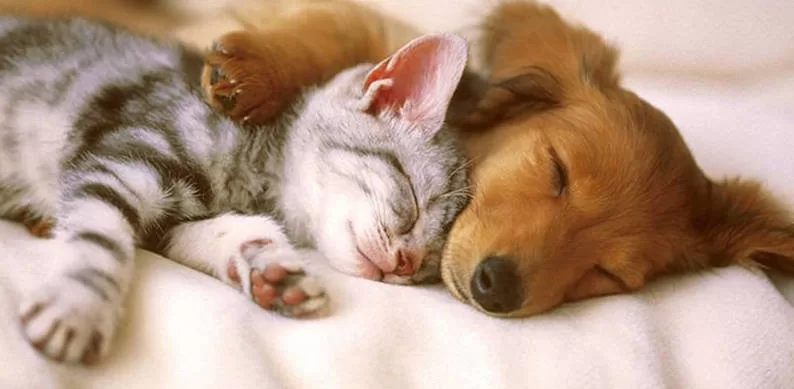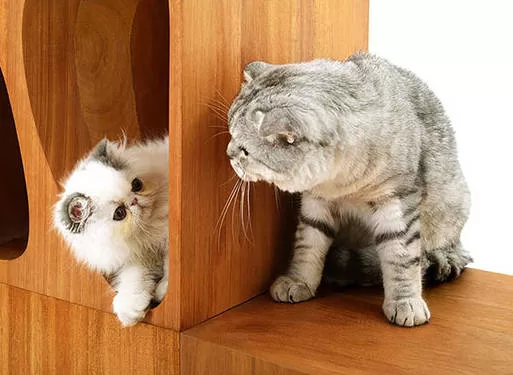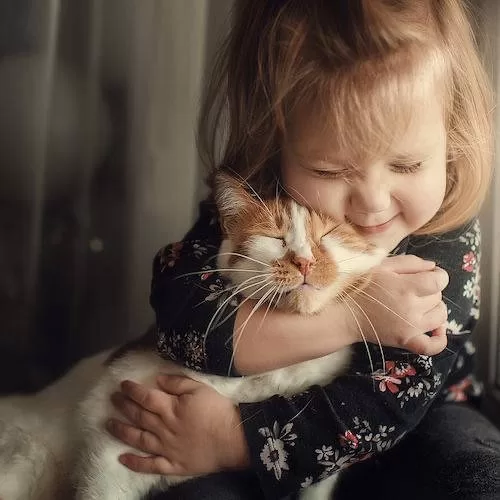So, you have a new cat coming into your home? This is exciting! But introducing a new feline friend to your home requires careful consideration and planning. Adapting a new cat to your environment is crucial for its well-being and the harmony of your home.
Going slowly and gradually introducing the new cat to your environment is key. This allows them to feel comfortable and safe in their new environment. It’s important to create a safe space where they can take refuge when necessary, especially if there are other animals in the house.

During this process, it is essential to provide the necessary care and attention to ensure a smooth transition. Taking steps such as using scent exchange techniques with a washcloth or towel can help familiarize the new cat with the scents of other pets in the household. Keeping doors closed initially can prevent overwhelming interactions between animals.
What to avoid when introducing a new cat into the home
When bringing a new cat into your home, it is important to be careful and patient during the introduction process. Avoiding certain situations can help make the transition smoother for everyone involved. Here are some things to avoid when introducing a new cat into the home:
Do not force interaction between cats immediately
It’s natural that you want your cats to get along from the start, but forcing immediate interaction between them can cause stress and conflict. It is important to allow each cat their own time to adjust to the other’s presence. Let them sniff each other under the door or through a grate before allowing direct contact.
- Allow each cat to have their own safe space where they can retreat when needed.
- Gradually introduce the smells of both cats, exchanging cloths with each one’s scent.
- Use interactive toys or feathered games to distract them while they are close but apart.
Avoid busy and noisy environments for the first contact

When it’s time for the cats’ first physical encounter, choose a calm, peaceful environment. Busy, noisy environments can make them anxious and increase the chances of aggressive behavior. A neutral location, such as a rarely used room, can be a good option.
- Turn off noisy electronic devices and keep the television at a low volume.
- Avoid guests or other pets during this initial time.
- Make sure each cat has escape routes available, such as high shelves or hiding places.
Do not leave cats alone without supervision initially
In the early stages of introduction, it is important to supervise cats whenever they are together. Leaving them alone without supervision can lead to serious fights or even serious injuries. Be there to intervene if there is any sign of aggression.
- Use fences or gates to separate cats’ spaces when you cannot directly supervise them.
- Pay close attention to cats’ body language, such as flattened ears, growls, or tense postures.
- If a fight occurs, separate them safely and try to identify the cause of the conflict.
Remember that each cat is unique and may react differently to the introduction of a new feline companion. Be prepared to adjust the process as needed and don’t be in a rush to force an immediate friendship. With time and patience, your cats can end up becoming great friends.
Step by step for adaptation between cats
Introducing a new cat into the home can be an exciting but also challenging experience for both the new feline and the resident cat. To ensure that adaptation occurs in the best way possible, it is important to follow some important steps. In this guide, I will share with you a simple step-by-step guide to help your cats adapt.
Slow and gradual introduction of cat smells
Before allowing cats to meet face to face, it is essential to create familiarity through smell. Start by rubbing a cloth or towel on the new cat’s face and then rub it on the furniture and objects in the house. This allows the new feline’s scent to be gradually introduced into the environment.

Allow cats to see each other through doors or fences at first
At the beginning of the adaptation process, it is recommended to allow cats to see each other without having direct contact. Place a railing or door between them so they can watch each other without putting themselves at risk. This helps reduce initial stress and allows them to get used to each other’s presence.
Promote positive associations with games and snacks
During the first interactions between cats, it is essential to create positive associations. Use interactive toys and offer tasty snacks while they are close to each other. This way, they will begin to associate the other cat’s presence with pleasant and rewarding moments.
Remember to follow each step gradually
Adaptation between cats is a gradual process that requires patience and time. It is important to proceed to the next step only when both cats are comfortable with the current stage. Forcing an interaction too quickly can cause stress and conflicts between them.
Be aware of signs of stress or aggression
Throughout the adaptation process, be aware of signs of stress or aggression on the part of the cats. This includes growling, hissing, arching of the back, bristling and aggressive behavior. If any of these signs are observed, go back to the previous stage and proceed more slowly.
Provide individual resources for each cat
It is important to ensure that each cat has its own individual resources, such as separate litter boxes, food and water bowls. This helps avoid territorial disputes and allows each feline to have their personal space.

By following these steps during the adaptation between your cats, you will be creating an environment conducive to a harmonious coexistence. Remember to be patient and allow the cats time to get used to each other. With proper dedication and care, you will be able to enjoy the company of your adorable felines together!
Leave the cat in a quiet room
When you bring a new cat home, it’s important to give him time and space to adapt to his new environment. An effective way to do this is to leave the cat in a separate room at first. This will help reduce stress and allow the cat to gradually become familiar with its new home.
Choose a separate room for the new cat to adapt initially
When selecting a room to keep your new cat, choose one that is quiet and safe. It could be an empty room or even a bathroom. Make sure this space is free of dangerous or toxic objects, such as poisonous plants or chemicals.
Provide water, food, litter box and comfortable items on site
In your chosen room, make sure you provide your cat with everything it needs to feel comfortable. Set out a bowl of fresh water, a food bowl with their favorite food, and a clean litter box. Additionally, add some cozy items, like a soft bed or a warm blanket.
Provide moments of daily interaction in this space
Even if the new cat is in a separate room, it is essential to dedicate some time every day to interact with him in that specific environment. Approach the cat calmly and speak in a soft tone. Offer snacks or toys to encourage interaction. These moments will help the cat feel safe and confident in its new home.
Keep the new cat in the room for a few days
It’s important to allow the new cat to stay in the separate room for at least a few days, or even a week, depending on the animal’s personality. This will give him enough time to get used to the smells and sounds of the house before exploring other spaces. Remember to visit your cat regularly during this time to make sure she is doing well.
Gradually introduce the new cat to other areas of the house
After a period of adaptation in the separate room, you can begin to gradually introduce the new cat to other areas of the house. Open the door to the room and let him explore the surroundings under supervision. Make sure all other animals in the house are elsewhere during this initial phase.
Observe the new cat’s reactions when exploring new spaces
As you allow the new cat to explore other areas of the house, carefully observe its reactions and behaviors. Some cats may become scared or anxious when leaving their initial safe space. If necessary, return to the previous step and give more time for adaptation before continuing to explore the other spaces.

Remember that each cat is unique and it may take longer to adapt to changes. Be patient and respect your feline’s rhythm. With care and affection, you will help the new cat feel comfortable and welcome in its new home.
Knowing by smell and positive association
Now that you’ve placed your new cat in a quiet room, it’s time to start gradually introducing the new cat’s scent to the environment. By following a few simple strategies, you can help your cats become familiar with each other’s scent and create a positive association between them.
Exchange objects with the scent of both cats gradually
An effective way to introduce residents to the new cat’s scent is by exchanging objects with each feline’s scent. You can start by rubbing a cloth or towel on the new cat’s face and then wiping the same cloth on furniture or areas where other cats tend to hang out. Likewise, do this with the other cats so they can smell each other.
- Rub a cloth on the new cat’s face and wipe it on areas frequented by other cats.
- Do the same process with the other felines so everyone can become familiar with the different smells.
- Repeat this switch gradually over the days to allow everyone to get used to the new scents.
Using synthetic pheromones to help with adaptation
Another useful option is to use synthetic pheromones to help your cats adapt. Pheromones are chemical substances naturally released by animals as a form of communication. There are products available on the market that imitate these pheromones, such as sprays and diffusers.
- Use a synthetic pheromone spray where cats tend to hang out to create a calmer atmosphere.
- Consider using a pheromone diffuser in your home to help calm your feline during the adjustment process.
Associate pleasant moments such as meals with olfactory encounters
An effective strategy for creating a positive association between cats is to associate pleasant moments, such as meals, with olfactory encounters. This will make them relate the new cat’s smell to something good and pleasant.
- During mealtimes, place your cat’s food containers close to each other but still a safe distance apart.
- As they get used to this closeness, gradually reduce the distance over the days.
- Always observe the cats’ behavior during these times and make sure everyone is comfortable.
Always remember to reward your cats when they have positive interactions with each other. This will help strengthen the positive association between them and make the entire process smoother and more harmonious.

First visual and physical contact
After the initial phase of introduction by smell, it is time to allow cats to see each other without direct physical contact. This is important so that they begin to familiarize themselves visually before moving on to physical interactions.
During this first visual contact, it is essential to closely monitor the cats’ reactions. Observe whether any of them show signs of stress or aggression. These signs may include growling, upright posture with raised hair, staring, and dilated pupils.
If you notice any signs of stress or aggression during eye contact, it is recommended to stop the interaction and give the cats time to calm down before trying again. Remember that each cat has its own rhythm and time to adapt to the other’s presence.
If the cats seem comfortable during their first eye contact, you can move on to their first physical interactions. However, it is critical to continue carefully supervising these interactions to ensure the animals’ safety.
During their first physical interactions, avoid forcing cats together. Let them choose when and how they want to approach each other. Additionally, provide access to different objects and areas of the house so that each cat can have their own space if they need to retreat.
Also observe how the cats are reacting to sharing the litter box. If there is a problem in this regard, it is recommended to provide separate litter boxes for each cat. This can help avoid conflicts and stress related to territoriality.
Remember that each case is unique and there may be variations in the time it takes for cats to get used to each other. Some cats may become friends quickly, while others may take weeks or even months to fully adjust.
When introducing a new cat into your home, be patient and prepared to deal with any challenges that may arise throughout the adaptation process. Over time, most cats are able to adapt and live harmoniously with each other.
Simultaneous feeding in separate environments
Offering food to cats in different, but close, locations is an effective strategy to facilitate the adaptation of a new cat in the house. Allowing them to get used to each other’s presence during mealtimes can help reduce stress and tension between felines.
Space is also important
When it comes to introducing a new cat into the household, it is essential to ensure that each animal has its own space to eat. This means providing separate food bowls for each cat in different locations in the house. Having separate spaces for feeding allows each cat to feel safe and comfortable during meals.
Gradually bring the food containers closer
An effective strategy is to start with food containers in completely separate areas of the house. For example, place the new cat’s food bowl in a different room from the rest of the animals. As your cats get used to each other’s presence at mealtimes, you can gradually move the food bowls closer together over time.
Beyond the food
In addition to offering simultaneous feeding in separate environments, it is important to consider other factors related to the coexistence of cats in the same house. Be sure to provide adequate resources for all animals, such as sufficient litter boxes and individual resting spaces.
Practical example
Let’s imagine the following situation: you have an older cat at home and you are thinking about adopting a new kitten. To facilitate the adaptation of both animals, you decide to follow the strategy of simultaneous feeding in separate environments.
At first, place the new cat’s food bowl in a different room, like the bathroom. Make sure this space is comfortable and quiet for the kitten to eat without interruption. In the meantime, keep your older cat’s food bowl in its usual location.
As the days go by, observe how the cats react during meals. If they seem calm and relaxed, you can begin gradually moving the food bowls closer. For example, move the new cat’s bowl to an area close to the room where your other cat usually eats.
Continue monitoring feline interactions during meals and adjusting the proximity of bowls as needed. With patience and time, the cats will get used to each other’s presence during meals and will be able to share the same space peacefully.
Simultaneous feeding in separate environments is just one of the strategies that can be used to introduce a new cat into the home. Each animal is unique, so it is important to observe their individual reactions and adapt approaches as necessary.

Conclusion: Final tips for adapting the new cat to the house
Now that you know how to introduce a new cat into your home, it’s time to put these tips into practice and ensure a smooth transition for all family members, including the feline. Remember to avoid stressful situations for your new friend by providing a safe and welcoming environment.
Make sure you follow the recommended steps, starting with the initial separation in a quiet room. Allow cats to gradually get to know each other through scent and positive associations. Introduce visual and physical contact little by little, always monitoring the animals’ reactions. And don’t forget to offer simultaneous feeding in separate environments to avoid conflicts.
With patience and dedication, you will be creating the foundations for a harmonious coexistence between your cats. Enjoy this new phase in your home and enjoy the company of these adorable felines!
Frequently Asked Questions about adapting a new cat to the house:
How long does it take for cats to adapt to each other?
The time needed for cats to adapt to each other may vary depending on the individuals involved. In some cases, it may only take a few weeks; in other cases, it may take months. It’s important to be patient during this process and allow them to set their own pace.
Can I leave cats alone during adaptation?
During adaptation, it is recommended that cats are not left alone for long periods of time. It is important to monitor interactions between them and be there to intervene if problems occur. Gradually, you can increase the amount of time the cats are together unsupervised.
What to do if cats continue to fight even after adaptation?
If cats continue to fight even after adaptation, it may be necessary to seek professional help from a veterinarian or animal behaviorist. They will be able to assess the situation and provide specific guidance for dealing with the problem.
Can I speed up the adaptation process among cats?
Although it’s tempting to want to speed up the adaptation process among cats, it’s important to allow them to set their own pace. Forcing meetings or putting pressure on them can cause more stress and make it difficult to live together peacefully.
How to ensure a smooth transition for a new cat in the house?
To ensure a smooth transition for a new cat in the household, it is essential to provide a safe and welcoming environment from the beginning. This includes providing separate spaces for each cat, gradually introducing smells and positive associations, and carefully supervising interactions until they feel comfortable with each other.
External Links:
https://www.canberratimes.com.au/story/6107578/how-to-introduce-your-new-cat-to-your-home/

